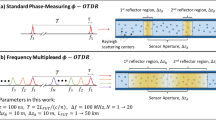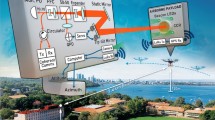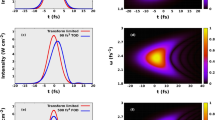Abstract
A COMMUNICATION with the above title was recently published by McCormick et al.1. This work gave, for October 29, 1965, a light return of about 10 counts per pulse at heights from 75 km to 125 km and, for October 31, about 1.5 counts per pulse at heights from 75 km to 100 km. If one takes the system parameters given and assumes 3 per cent photomultiplier quantum efficiency, 30 per cent receiving system transmission and 80 per cent atmospheric transmission, then the 10 counts per pulse corresponds to a return 150 times greater than that which would be given by Rayleigh scattering from molecules at 75 km, and 105 greater at 125 km.
This is a preview of subscription content, access via your institution
Access options
Subscribe to this journal
Receive 51 print issues and online access
$199.00 per year
only $3.90 per issue
Buy this article
- Purchase on SpringerLink
- Instant access to full article PDF
Prices may be subject to local taxes which are calculated during checkout
Similar content being viewed by others
References
McCormick, P. D., Poultney, S. K., van Wijk, U., Alley, C. O., Bettinger, R. T., and Perschy, J. A., Nature, 209, 798 (1966).
Bain, W. C., and Sandford, M. C. W., to be published in J. Atmos. Terr. Phys.
Author information
Authors and Affiliations
Rights and permissions
About this article
Cite this article
BAIN, W., SANDFORD, M. Backscattering from the Upper Atmosphere (75–160 km) detected by Optical Radar. Nature 210, 826 (1966). https://doi.org/10.1038/210826a0
Issue date:
DOI: https://doi.org/10.1038/210826a0
This article is cited by
-
Determination of the attenuation factor of the atmosphere using the nonstationary scattering method
Journal of Applied Spectroscopy (1970)
-
Optical Radar Evidence for Atmospheric Dust Layers around 85 km Altitude
Nature (1967)
-
Optical Radar Detection of Backscattering from the Upper Atmosphere
Nature (1967)
-
Evidence other than Optical Radar Backscatter for the Existence of an Accumulation of Dust between 70 and 140 km at Low Latitudes
Nature (1966)



